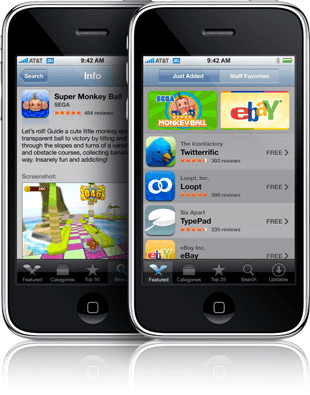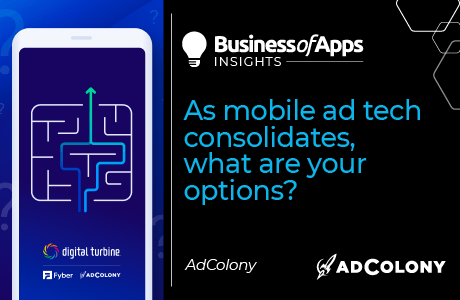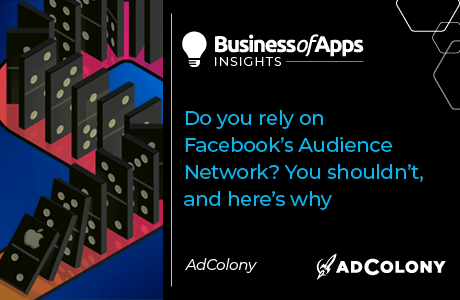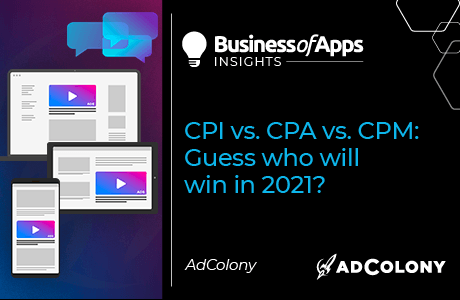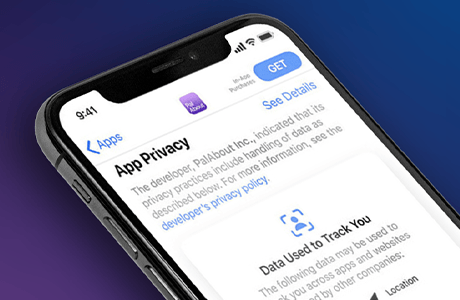It’s easy to look back over a decade and think how far we’ve come. Take one glance at an iPhone screen from 2010 and it’s clear how much design and content has changed over the past ten years:
But has it, really?
Take a closer look. We still use the same kinds of apps, like social media tools (Twitterific) and ways to connect that leverage the native functions of the phone, such as GPS (Loopt). We shopped (eBay), and we played games, as seen by Super Monkey Ball, a game that has been around for 20 years, and on the iPhone for about ten.
While back then there were maybe a dozen or so arcade games with the Games category to choose from, today there are hundreds of thousands. Part of that boom in the past couple of years included the rise of hypercasual games. Instantly playable, lightweight and often addictive because they are easy to play and sessions are short.
But there’s still more. RPGs, puzzle games, word games, are all on the rise. Name a category of mobile games and it’s experienced huge growth over the past decade. Tons of innovation has poured into this space, but as with all things, sometimes things come full circle.
Back To Banner
The most fascinating facet of the content explosion is what it has done to the trajectory of advertising formats. Mobile ads started with clunky desktop browser ads shrunk down to mobile web size, and when it became clear consumers were moving to apps (by 2015, 88% of online time was spent in-app) the standard mobile banner appeared, followed quickly by interstitial, overlay, native and, ultimately, video.
But banners are back. Fueled by the rapid testing and development cycles behind hypercasual games, developers of all stripes are rethinking how the original digital ad format can fit into their titles.
Why exactly has the rise of hypercasual pushed banners back to the forethought? A couple of reasons:
Hypercasual games have much simpler design and game mechanics than other genres. Session times are short. Where other monetization solutions may fall short, banners are a perfect fit.
Hypercasual users don’t typically stick around for long before bouncing to the next hypercasual game. To make money, these users must be monetized before they churn out. This is much easier to accomplish with an ad-focused revenue strategy. Effectively, you start monetizing your users the second they open the app.
AdColony was one of the first companies to focus hard on mobile video. It may seem weird for some of our long time video monetization partners to hear, but to reiterate, banners are back in a big way and our most current SDK update includes full support for banners, too.
They work – so we support it.
Fuzzy Lines
Back in the day, there was a clear delineation between the demand side (advertiser), the supply side (publisher), and those that managed the in-between space (ad technology platforms & exchanges).
There has always been some degree of fuzziness in mobile gaming. Publishers who monetize through ads are inevitably advertisers doing user acquisition (and vice versa). Both monetization and UA are data-driven exercises where having more data and harnessing it correctly creates a competitive advantage.
But as our industry has evolved the lines have become even fuzzier.
Enter the ad networks. Monetization and UA providers like Applovin, Ironsource (and yes, AdColony) also have a massive pool of advertising performance data but don’t always get a full picture of what is happening client-side. Now in some cases, we are seeing the lines between ad networks and game publishers/advertisers becoming fuzzy, too.
How do you take advantage of all that demand/supply aligned data though? Share it.
Share it with attribution partners and supply partners on the growth/user acquisition side, and with your monetization partners too. The more [sanitzed, aggregated, anonymized, and consensually given] data you can share, the better all of your partners can optimize and that’s a win for everyone, including your users.




